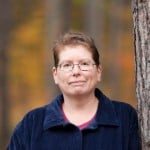 Kathleen Halvorsen and her international team are featured in the Michigan Technological University’s 2015 Research Magazine in an article titled Making Greener Leaner for their research on the impacts of bioenergy on communities.
Kathleen Halvorsen and her international team are featured in the Michigan Technological University’s 2015 Research Magazine in an article titled Making Greener Leaner for their research on the impacts of bioenergy on communities.
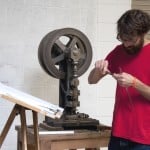
Daniel Schneider, a master’s student in the Industrial Archaeology program has received funding through two grants totaling $2,800 for his master’s thesis project at the Hamilton Wood Type Museum in Two Rivers, WI. A grant from The Kohler Foundation, Inc. of Wisconsin supports a series of oral history interviews with workers who produced wood printing type in the type shop of the Hamilton Manufacturing Company. Another grant from the Wisconsin Humanities Council supports a public archaeology component of Schneider’s thesis research, which involves the experimental operation of an 19th-century stamping machine that produced wood type for printing decorative borders. These borders would have been used on posters and other large-scale printed matter such as flyers and handbills. He has made a number of trips to the museum to document and rehabilitate the machine, meet with former employees, and use the museum’s archives. He also attended a Wayzegooze event there last in November where he interacted with leaders in the current wood type printing community.
Schneider will demonstrate the machine’s operation March 10-14, 2015, at Hamilton Wood Type & Printing Museum. The museum is in Two Rivers, WI, 40 miles southeast of Green Bay, and is the largest museum devoted to wood type printing in the country (and perhaps the world). He is also in charge of the letterpress studio at the Copper Country Community Arts Center in Hancock, MI.
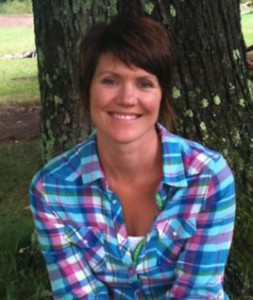
Michigan Tech student Melissa Michaelson has been awarded two years of funding to complete her B.S. in anthropology through the EPA Greater Research Opportunities (GRO) Fellowship for Undergraduate Environmental Study. She has the honor of being one of only 34 awards given nationwide in this competition. In addition to funding her education for the final two years of her degree, Melissa will be placed in a paid summer internship at an EPA facility. She is focusing her degree in the area of environmental anthropology with the aim of doing senior thesis research on social and cultural barriers to a plastic free campus and community. Building on her experience designing a display of 600 plastic bottles collected from local trash bins to engage local community members in discussions about consumption patterns, Melissa continues to do community-engaged research in Dr. Richelle Winkler’s Communities and Research class. This year the class, funded by a separate EPA People, Prosperity and Planet grant, is creating a guidebook that former mining communities can use to evaluate the social and technical feasibility of using minewater for geothermal energy. Her sponsor for the EPA GRO Fellowship is Dr. Kari Henquinet.
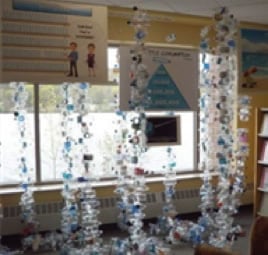

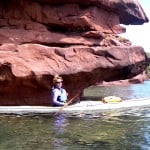 Nancy Langston has received $270,000 from the National Science Foundation (NSF) for a three year research project titled “Historical and Spatial Aspects of the Migration of Toxic Iron-Mining Contaminants into the Lake Superior Basin.”
Nancy Langston has received $270,000 from the National Science Foundation (NSF) for a three year research project titled “Historical and Spatial Aspects of the Migration of Toxic Iron-Mining Contaminants into the Lake Superior Basin.”
This project investigates the mobilization of toxic mining contaminants in the Lake Superior basin. The investigator will conduct archival research and oral-history interviews, and she will develop a geo-spatial database. She plans to link her historical research with contemporary policy and regulation issues, and to engage with local communities, including Native Americans in the region.
The investigator is a well-known environmental historian whose previous work has drawn on multiple disciplines and generated significant media interest; she has a network of contacts that includes a documentary filmmaker and relevant stakeholder groups. The project will produce a narrative of environmental history with the potential for overlap with important questions of technology, culture, and society. It will be of interest to citizen scientists, a wide-array of scholars, and the general public. The most important broader impact of the project is that it might very well influence contemporary policy and law-making.

From Tech Today:
The Holland Sentinel published a feature article on Michigan Tech’s Industrial Archaeology students’ analysis of early mining activity in the vicinity of Fort Wilkins State Park.
From the Abstract:
To better document the fort’s history related to copper mining, a group of Michigan Technological University students — led by doctoral candidate Sean Gohman and Patrick Martin, Michigan Tech professor of industrial archaeology — is exploring land that is now part of the state park, looking specifically for evidence of mining activity by the Pittsburgh & Boston Mining Co., which operated in the region in 1844-48.
Click here to read the full article: Archaeology students seek answers to Fort Wilkins’ mining past
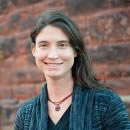
Richelle Winkler (SS) has received $14,148 from the Michigan Department of Natural Resources for a 26-month-long research project titled “Geographic Analysis of Age-Period-Cohort Dimensions in Michigan Deer Hunter Participation.”
From Tech Today
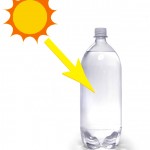 Richelle Winkler (SS) and Joshua Pearce (MSE/ECE) coauthored “Evaluating the Geographic Viability of the Solar Water Disinfection (SODIS) Method by Decreasing Turbidity with NaCl: A Case Study of South Sudan,” published in the journal Applied Clay Science.
Richelle Winkler (SS) and Joshua Pearce (MSE/ECE) coauthored “Evaluating the Geographic Viability of the Solar Water Disinfection (SODIS) Method by Decreasing Turbidity with NaCl: A Case Study of South Sudan,” published in the journal Applied Clay Science.
Globally, about one billion people don’t have access to clean drinking water. One cheap and easy method of cleaning water for consumption is to put it into plastic water bottles and set it in the sun (SODIS), but this method doesn’t work when the water is muddy. Pearce and his graduate students found that by adding simple table salt to water muddied with clay, the clay would settle the water enough to allow the SODIS method to work. Winkler worked with a graduate student at Princeton University on demographic analysis of the number of people who could potentially benefit from this salt+SODIS approach in Africa. The demographic team used a geographic information system (GIS) to identify geographic regions with the appropriate soil type, then overlaid that data with population estimates. They found that over a million people in South Sudan, a country where access to clean water is limited, could potentially benefit from this method.
Read the full article here.
PI Timothy Scarlett (SS) and Co-PI Junhong Min (SBE), “Cuyuna Range Heritage Tourism Project,” Brainerd Lakes Area Economic Development Corporation.
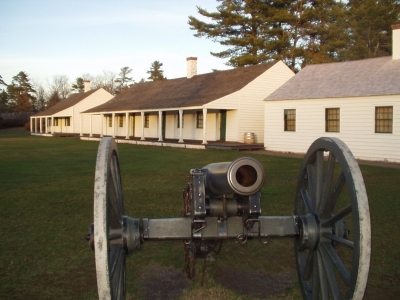
Prof. Patrick Martin and Ph.D. candidate Sean Gohman of Social Sciences have been awarded a two-year grant for archaeological surveys at Fort Wilkins State Park in Copper Harbor. The grant, for $19,487 each year (total of just under $39,000), comes from the Michigan Department of Natural Resources and will be used to support graduate students investigating the remains of the Pittsburg and Boston Copper Harbor Mining Company sit, now located on the Fort Wilkins property. This summer and fall the crew of archaeologists from Social Sciences will survey the site, and next year do some selected test excavation and recordation. If funding becomes available in 2016 and beyond, the team hopes to continue similar work on the Copper Harbor Range Lighthouse site.
Fort Wilkins was built in 1844 by the fifth U.S. Infantry Regiment to keep order in the Michigan copper mining district, though it was abandoned two years later (but re-garrisoned from 1867-70). In the absence of the military (1847-66 and 1871-1923) civilians frequently occupied fort buildings as residences and later as hunting camps and cottages until the property became a state park in 1923. Today Fort Wilkins State Park interprets three primary themes: early Keweenaw copper mining by the Pittsburgh and Boston Copper Harbor Mining Company, Lake Superior maritime history with the Copper Harbor Lighthouses, and nineteenth-century military history at the fort itself.
Since 1974 the Michigan Historical Museum has been responsible for historical activities within the park. Today, there are nineteen historical buildings: twelve original structures from the 1840s and seven reconstructions based on the historical and archaeological record. Archaeological research has been carried out intermittently at the fort from 1975 to present under state contracts and over that time various projects have investigated a number of the military buildings, the fort’s blacksmith shop, the Copper Harbor lighthouse, various trash and dump sites (often excellent windows into past material culture) as well as parts of the Pittsburgh and Boston Copper Harbor Copper Mining Company activities. This current grant will support phase I and II (surface survey and selected test dings, respectively) archaeological projects in the P&BCMC site along the northern boundary of Fort Wilkins State Park along the southern shore of Copper Harbor.
PI Patrick Martin (SS) and Co-PI Sean Gohman (SS), “Archaeological Surveys, Fort Wilkins State Park,” Michigan DNR.
PI Timothy Scarlett (SS), “pXRF Study of Antique Pottery in Two Utah Museums,” Utah Humanities Council.
PI Richelle Winkler (SS), “Angler Demographics–An Age-Period-Cohort Analysis,” Great Lakes Fishery Commission.
PI Adam Wellstead (SS), “Measuring Policy Capacity in the Great Lakes Fisheries Sector,” Great Lakes Commission.